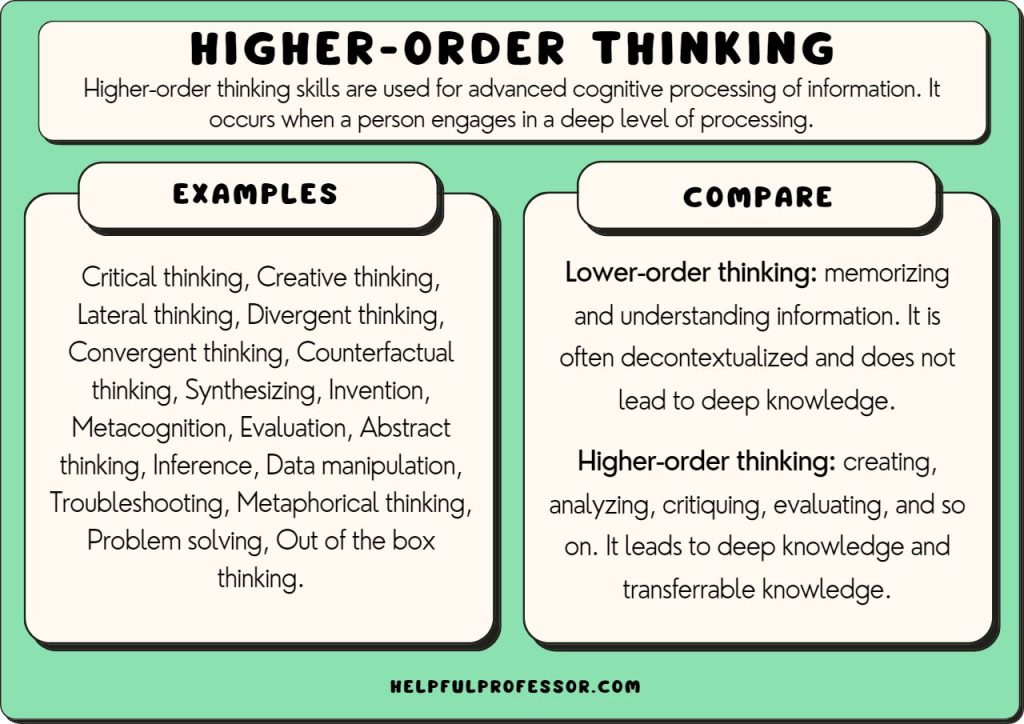In the realm of education, stimulating higher-order thinking is crucial for cultivating a learner’s ability to analyze, evaluate, and create. One of the frameworks instrumental in understanding the complexity of cognitive processes is the Costa’s Levels of Thinking. Among the three levels of this model, Costa Level 3 stands out as a prime source for fostering deeper engagement and critical analysis among learners. This article delves into Costa Level 3 question examples, highlighting their role in promoting higher-order thinking.
Understanding Costa’s Levels of Thinking
Costa’s Levels of Thinking are structured in a way that guides educators through a progressive escalation of cognitive demands. Level 1 entails basic recall of information, where students are required to remember facts or concepts. Level 2 shifts towards comprehension and application, focusing on understanding and using information in new contexts. However, Level 3 transcends these initial layers, plunging into the depths of analysis, synthesis, and evaluation, prompting learners to think critically and creatively.
The Essence of Costa Level 3
When approaching Level 3, educators challenge students to explore concepts with a critical eye. The questions posed at this level encourage learners to reflect on their understanding, make connections, and form judgments based on evidence. This not only fosters a stimulating classroom environment but also nurtures essential skills that students carry throughout their lives.
Crafting Costa Level 3 Questions
Creating effective Level 3 questions requires a blend of curiosity and rigor. Here are some types of Costa Level 3 question examples, aimed at various subjects:
- Literature: “How would the story change if it were told from a different character’s perspective? Analyze the implications of narrative voice on thematic development.”
- History: “Evaluate the impact of the Industrial Revolution on modern society. What were the long-term effects on social structures and economic practices?”
- Science: “Given the current evidence on climate change, propose an innovative solution. Justify your solution with scientific reasoning.”
- Mathematics: “How would altering the parameters of a polynomial function change its graphical representation? Assess the fundamental transformations occurring in the function.”
- Art: “Interpret the underlying messages in a selected piece of artwork. How do cultural and historical contexts influence your interpretation?”
Using Levels of Inquiry
Incorporating Costa Level 3 questions into lesson plans involves more than just asking the right questions. Educators can utilize Levels of Inquiry to help students engage with ideas on a deeper level. For instance, they might implement project-based learning, where students investigate real-world problems, requiring them to apply analytical skills and come up with unique solutions. Through this approach, students not only grapple with content but also cultivate a holistic understanding of the subject matter.
Benefits of Engaging with Level 3 Questions
Encouraging students to interact with Level 3 questions offers rich dividends. First, it enhances analytical skills, enabling students to dissect complex ideas and arguments. Students become adept at not just critiquing information but also constructing well-founded perspectives. Furthermore, Level 3 questions promote collaboration; when learners discuss these queries in groups, they gain diverse insights, fostering a community of inquiry.
Tackling Resistance: Challenges in Higher-Order Thinking
While engaging students with Costa Level 3 questions, educators might encounter resistance. Some students may feel overwhelmed by the complexity, fearing judgment or failure. To combat this, it’s vital to cultivate a classroom atmosphere that values mistakes as a part of the learning process. Encouraging a growth mindset can empower students to embrace challenges and take intellectual risks.
Assessment Strategies for Level 3 Thinking
Assessing higher-order thinking can be challenging, yet it is essential for understanding student growth. Rubrics that prioritize analytical reasoning, creativity, and evidence-based justification can provide clarity in evaluation. Additionally, formative assessments such as reflective essays or group discussions can be employed to give insight into student comprehension and engagement.
Conclusion: The Future of Higher-Order Thinking
Integrating Costa Level 3 questions into educational practices paves the way for future-focused learning experiences. By nurturing higher-order thinking, educators prepare students not only for academic success but also for the complexities of real-world challenges. As students learn to analyze, evaluate, and create, they become empowered, capable of contributing thoughtfully to society. The journey into higher-order thinking is not merely an educational endeavor—it is a crucial investment in the fabric of future generations.
